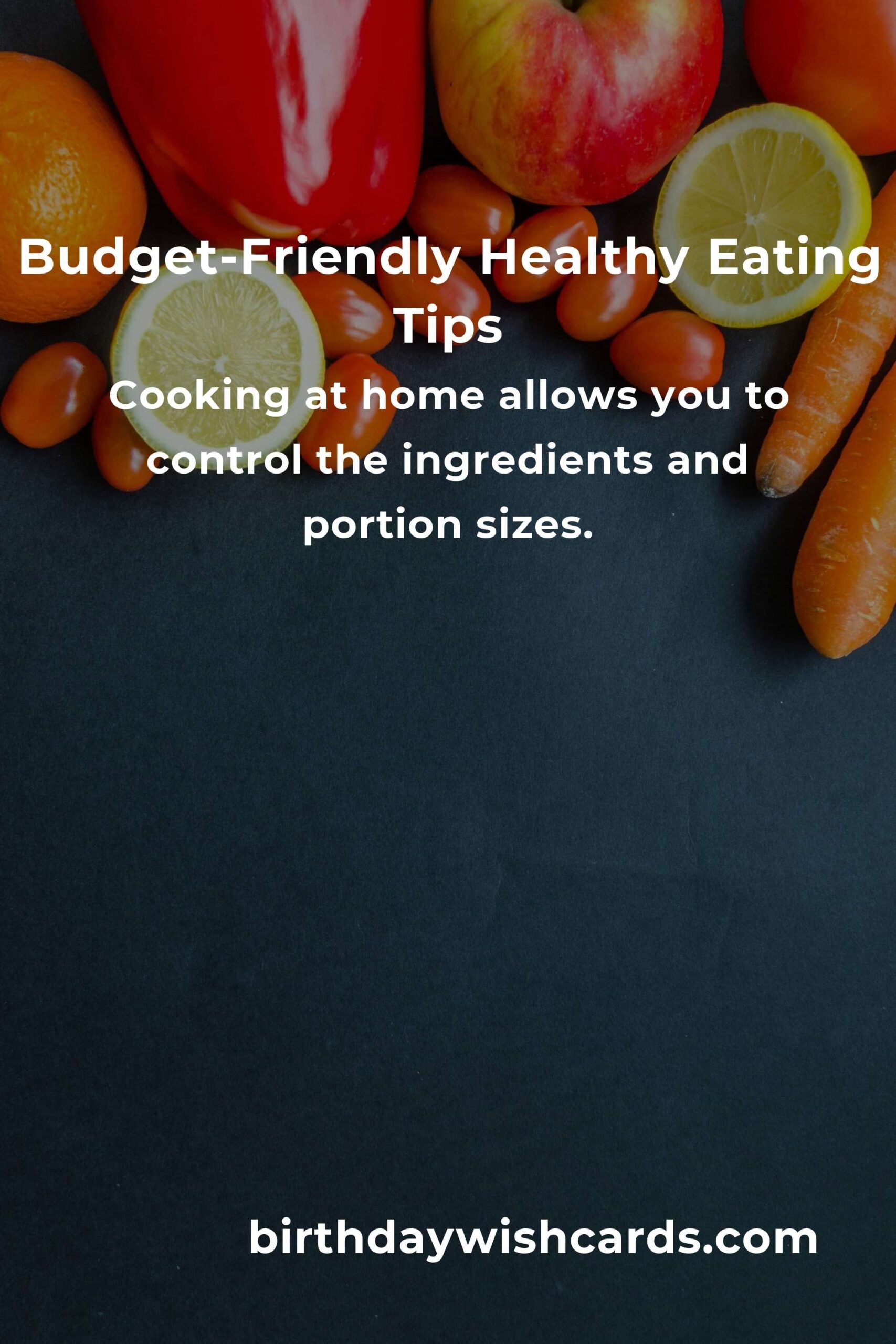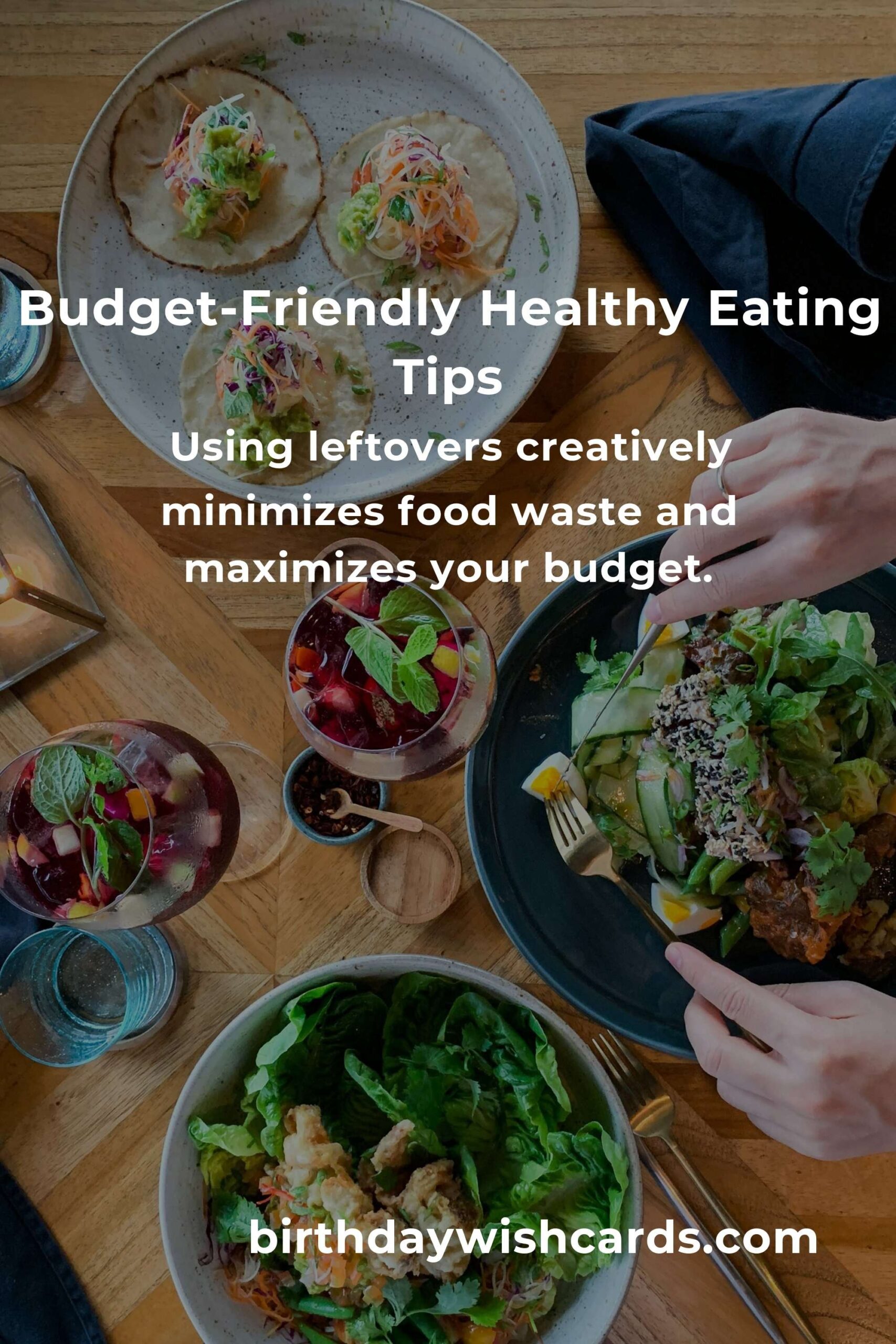
Eating healthy on a budget can often feel like an insurmountable challenge. However, with the right strategies, you can enjoy nutritious meals without breaking the bank. This guide provides a complete checklist for budget-friendly healthy eating, helping you make the most out of your grocery shopping and meal planning.
1. Plan Your Meals
Meal planning is the cornerstone of budget-friendly healthy eating. Start by organizing your meals for the week. When you plan, you can make a shopping list that prevents impulse buys and ensures you use all the ingredients you purchase. Consider incorporating seasonal produce, as it is often less expensive and more flavorful.
2. Buy in Bulk
Buying in bulk can significantly reduce costs, especially for staples such as grains, beans, and nuts. Visit bulk food stores or the bulk section of your local grocery store to find these items at a lower cost per unit. Remember to store bulk items properly to maintain freshness and avoid waste.
3. Embrace Plant-Based Meals
Plant-based meals are not only healthy but also budget-friendly. Beans, lentils, tofu, and vegetables are generally less expensive than meat and can be used to create delicious and satisfying meals. Experiment with different spices and herbs to enhance the flavors of your plant-based dishes.
4. Cook at Home
Cooking at home is one of the most effective ways to save money and ensure healthy eating. Home-cooked meals allow you to control the ingredients and portion sizes, reducing the consumption of unhealthy additives and excess calories. Try batch cooking and freezing portions for future meals to save time and effort.
5. Use Leftovers Wisely
Make the most of your meals by using leftovers creatively. Transform leftover vegetables into a stir-fry, use cooked grains in salads, or repurpose roasted chicken into a soup. This approach minimizes food waste and maximizes your budget.
6. Shop Smart
Being a smart shopper is key to staying within your budget. Compare prices between different brands and stores, take advantage of sales and coupons, and don’t shy away from store brands, which are often less expensive and just as good as their name-brand counterparts.
7. Grow Your Own Produce
If you have space and time, consider growing your own fruits and vegetables. Gardening can be a rewarding and cost-effective way to supplement your diet with fresh produce. Start with easy-to-grow items like herbs, tomatoes, or salad greens.
8. Prioritize Nutrient-Dense Foods
Focus on purchasing nutrient-dense foods that provide more nutrition per calorie. Foods such as leafy greens, berries, sweet potatoes, and whole grains offer high nutritional value and can be incorporated into various meals.
9. Avoid Processed Foods
Processed foods are often more expensive and less nutritious than whole foods. By reducing your intake of processed items, you can lower your grocery bill and improve your diet’s nutritional quality.
10. Stay Informed
Stay informed about the latest in nutrition and budget-friendly eating by following blogs, podcasts, and social media accounts focused on these topics. Continuous learning will keep you motivated and inspired to maintain healthy eating habits on a budget.
By implementing these strategies, you can enjoy a healthy diet without overspending. Remember, being mindful of your choices and planning ahead are crucial steps towards achieving budget-friendly healthy eating.
Meal planning is the cornerstone of budget-friendly healthy eating. Buying in bulk can significantly reduce costs, especially for staples. Plant-based meals are not only healthy but also budget-friendly. Cooking at home allows you to control the ingredients and portion sizes. Using leftovers creatively minimizes food waste and maximizes your budget.
#HealthyEating #BudgetFriendly #MealPlanning #EatSmart #NutritionTips












